|
Music Reviews
|
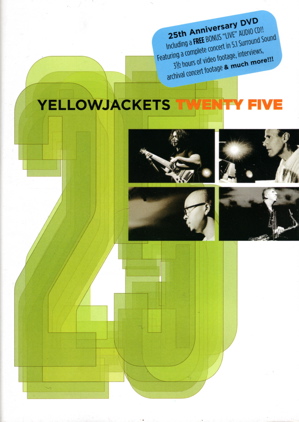 |
|
YellowJackets Twenty Five
Heads Up DVD HUDV 7112
|
|
0 |
5 |
|
Performance |
 |
|
Sonics |
 |
|
Twenty-five years and
five personnel changes later, the easy to love Yellowjackets jazz quartet
celebrates their silver anniversary with an excellently recorded. two-disc
package that includes a live audio CD plus a DVD. The latter is packed
with three and a half hours of surround sound concert footage plus
interviews and archival material. The bulk of the material consists of the
group's most popular tunes, newly contemporized for changing tastes.
The Yellowjackets, it
must be noted, are not the most enthralling musicians to watch. Hence any
number of close-ups, fades, and pans are included in an attempt to add
visual interest to the rather static players. I'd expressly avoid the
absurdly pretentious, out of character introduction to the interviews that
features black and white profiles of each band member gazing straight
ahead and then up to the stars, interspersed with shots of the universe
from afar. The music, however, is a thing apart. It may not stimulate the
deeper cavities of your brain, but the Yellowjackets create lively,
amiable jazz filled with good energy.
|
|

|
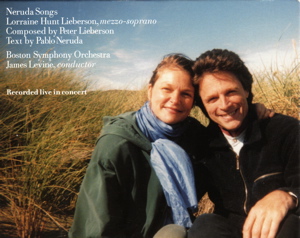 |
|
Peter Lieberson: Neruda Songs
Lorraine Hunt Lieberson, Boston Symphony Orchestra,
James Levine
Nonesuch
79954-2
|
|
0 |
5 |
|
Performance |
 |
|
Sonics |
 |
|
Expansive in concept,
magnificent in execution, Peter Lieberson's just-released Neruda Songs
(Nonesuch) speak of the unfathomable
mysteries of love and death. Written for his wife, the great mezzo-soprano
Lorraine Hunt Lieberson, the settings of five of Chilean poet Pablo Neruda's
100 Love Sonnets were inspired by the love the two shared for each
other.
Although Peter decided to
set the songs in August 1997, a month after he and Lorraine fell in love, he
first began to compose the music in 2005, as Lorraine was entering her final
year of illness. True to his path as a teacher of Tibetan Buddhism, he works
within a spare, sensuous aesthetic that revels in the flesh while honoring
the godliness within and beyond. Aware of his wife's soul-tugging vocal and
interpretive strengths, he takes us on a unique, multi-dimensional journey,
made all the more poignant for its acknowledgment of the fleeting.
Lorraine Hunt Lieberson
premiered the five Neruda Songs with the Los Angeles Philharmonic in
LA in May 2005, subsequently performing them with the Boston Symphony
Orchestra under James Levine in Boston and New York. This recording, culled
from the Boston performances of November 25-26, arrives on the heels of a
Grammy nominated all-Lieberson CD (Bridge 9178), far more generous in length
than Nonesuch's 32 minutes, that includes Lorraine's live 2004 Ravinia
Festival performance of Peter's Rilke Songs. Both recordings serve as
enduring testaments to her communicative mastery.
A little over seven
months before her death at age 52, Lorraine's warm, velvety voice glows with
inner strength and health. As always, her ability to sing with unadorned,
naked honesty is a thing of wonder. At the conclusion of the final song, as
Lorraine sings in a sliver of a voice that love is like a long river, only
changing lands and changing lips, the breath stills, and the heart opens. |
|

|
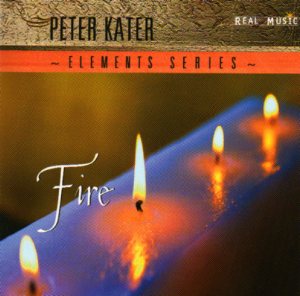 |
|
Peter Kater
Elements
Series: Fire
Real Music RM
4003
|
|
0 |
5 |
|
Performance |
 |
|
Sonics |
 |
|
Beyond Earth,
Air, and Water, it is Fire, one of the four CDs that
comprise Peter Kater's "Elements Series" that received a 2007 Grammy
nomination for Best New Age Album. Although the first track, "Eternal
Sunshine," is a bit straight-ahead treadmill, the other compositions,
including "The Way Home," "Twilight," "Hearth Fire," and "Afterglow,"
possess an uncommon, serene beauty. It's music that makes you want to slow
down, pause, lie on your back, and gaze up at a literal or metaphorical sky
filled with stars. Kater's all-acoustic flights, featuring his piano joined
by Ludvig Girdland's soulful violin and Paul McCandless' rich treasure chest
of penny whistles, oboe, English horn, and soprano sax, make one forget
about the dross of war. Fire instead purifies, preparing a place of wonder
and appreciation where sundry politicians and superficially pious men in
robes seem like needless distractions from that which is enduring and true. |
|

|
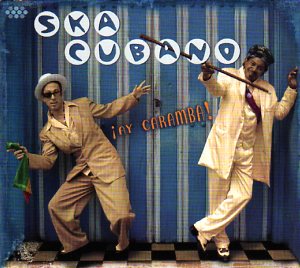 |
|
Ska Cubano
�Ay Caramba!
Cumbancha CMB
CD1
|
|
0 |
5 |
|
Performance |
 |
|
Sonics |
 |
|
Fun, fun, fun. The
inspiration to adapt ska, an infectious, upbeat style of music that
originated in Jamaica in the 1960s, to the indigenous rhythms of Cuban music
birthed from the mind of Britain's Peter A. Scott. Heading to Santiago de
Cuba with Natty Bo, a popular London DJ and vocalist, the two happened upon
a superb mix of Cuban musicians, among whom was vocalist Beny Billy.
Returning to London, Natty Bo drew together leading exponents of Cuban and
Jamaican music to create Ska Cubano. The music on their debut disc is wild,
irresistibly danceable, and celebratory from the get-go. You'll hear
elements of salsa, mamba, son, and reggae. But mostly you'll feel joy. Don't
miss "Big Bamboo," a song in Jamaican-inflected English that one-ups Mae
West's pistol in your pocket metaphor. |
|

|
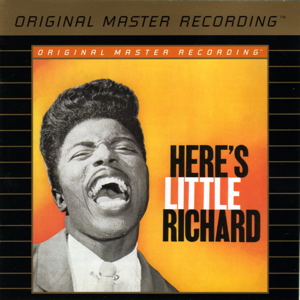 |
|
Little Richard
Little
Richard/Here's Little Richard
Mobile Fidelity
UDSACD 2028
|
|
0 |
5 |
|
Performance |
 |
|
Sonics |
 |
|
In the olden days, it is
rumored that a certain pre-pubescent adolescent on Long Island used to drive
his mother out of the house by playing Little Richard LPs at top volume.
(His mother may have screamed that he was driving her crazy, but hindsight
suggests that the damage was already done). Now, 50 years after Richard
Penniman's eponymous debut platter forever changed the course of rock 'n
roll, his first two albums reappear on a single ultra high-resolution
monaural Super Audio Compact Disc (Mobile Fidelity). Not even working from
the original masters, which produces better sound than on the '50's LPs, can
alter the fact that the sonics are far from the highest fidelity. (Hey, two
of the tracks were recorded in an unknown radio station). Yet not even
occasional tape saturation when he lets loose can detract from Little
Richard's high, give-it-all-you've-got state. Including such classic hits as
"Good Golly, Miss Molly" and "Tutti-Frutti" (the demo tune that won Little
Richard a recording contract and hinted at his conflicted sexual
orientation), "Keep A Knockin'," and "Ooh! My Soul," this fabulous disc
gives us the fabulous Little Richard in his prime, as he sings, screams, and
yelps as if his life depended on it. |
|

|
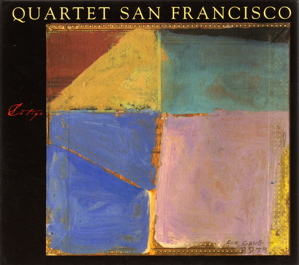 |
|
Quartet San Francisco
L�tigo
ViolinJazzRecordings JCCD104
|
|
0 |
5 |
|
Performance |
 |
|
Sonics |
 |
|
Rarely does
a self-produced CD of so-called "classical crossover" receive two Grammy
nominations. But such is the deserved fate of the second CD from Quartet San
Francisco (www.quartetsanfrancisco.com), the Bay Area Ensemble that, only
three years after its inception, captured
both the Special Prize and the
Grand Prize at the 2004 New York City International Tango Competition,
sponsored by the Argentine Consulate.
Why tango
is considered "crossover" rather than simply classical must have to do with
its danceability and powers of seduction. While it may lack snob appeal and
airs of the cloister, it certainly lacks not for sophistication. Especially
in these hands, the music is irresistible. Take, for example, Hernandez' "Cachita,"
Chick Corea's "Armando's Rhumba," or one of the most famous tangos of all
time, Matos Rodriguez's 1917 classic, "La Cumparsita." The titles may not be
familiar, but there's a good chance that, if you've heard a fair share of
tango, one of these tunes is already inscribed in your memory.
Tango San
Francisco seems to have tango in its blood, swinging and slinking through
the notes with considerable flair. The contrast between the unbridled
optimism of "Cachita" and the refined melancholy of Astor Piazzolla's
mysterious Nuevo tango, "Melodia en La Menor" could not be greater.
Piazzolla in fact makes his insinuating presence known three times, as do
two decidedly non-Latinos, Leonard Bernstein (in an arrangement of West
Side Story's "Cool" by Turtle Island String Quartet founder, David
Balakrishnan) and the quartet's first violinist Jeremy Cohen, who in "Crowdambo,"
pays homage to his late teacher, Anne Crowden, founder of Berkeley's Crowden
School of Music for children and young adults. There's so much unexpected
beauty in this music. Wonderfully recorded – one of its Grammy nominations
is for Best Engineered Album, Classical – with the bonus of John
Santos' percussion on three of its sixteen tracks – this CD is destined to
spend more time in your player than on the shelf. |
|

|
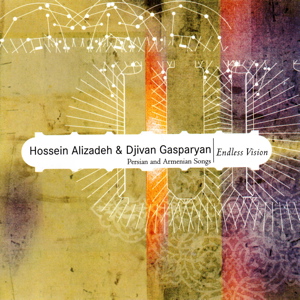 |
|
Hossein Alizadeh
& Djivan Gasparyan
Endless Vision: Persian and Armenian Songs
World Village
168047
|
|
0 |
5 |
|
Performance |
 |
|
Sonics |
 |
|
This exquisite musical
meeting of Iran and its northern neighbor Armenia proved far more audacious
than initially anticipated. When Persian master Hossein Alizadeh (b. 1951)
and Armenian virtuoso Djivan Gasparyan (b. 1928) collaborated on several
joint concerts in the summer of 2003, they never expected to encounter
government opposition. The concerts themselves, performed before
enthusiastic crowds of thousands in the serene outdoor environment of
Tehran's Niavaran Palace, went off without a hitch. Afterwards, however,
Iran's Ministry of Culture, which must approve all audio recordings before
they are released in that country, delayed the album's release for two years
because Alizadeh had invited one of his longtime pupils, the female singer
Afsaneh Rasaei, to perform onstage in the otherwise all-male Hamavayan
Ensemble. At last available in Iran and the United States, this exceptional
meeting of Iranian and Armenian musical traditions has been honored with a
2007 Grammy nomination for Best Traditional World Music Album.
"The
music of Iran and Armenia is a language shared between the two nations,"
says Alizadeh. "It's a mirror reflecting history in each phrase." A musical
crossroads between three peoples -- Armenian, Azeri, and Persian -- it
reflects the existence of a large and vibrant Armenian community within Iran
since the early 16th century.
Both musicians have
become well known to American audiences. The mournful sound of Gasparyan's
duduk, a traditional Armenian double-reed woodwind, has been heard in
soundtracks to Martin Scorsese's The Last Temptation of Christ and
Gladiator, and in artistic collaborations with Peter Gabriel, the Los
Angeles Philharmonic, and the Kronos Quartet. The younger Alizadeh, who
received his second Grammy nomination for the two-CD set Faryad,
frequently tours the U.S. as part of the trio Masters of Persian Music. He
has also written scores for some Iran's best-known "new wave" films, and
contributed to the development of the shurangiz, the new six-stringed
plucked lute he plays on the album, whose timbre is a hybrid of the
traditional Iranian tar, setar, and tanbur.
The album's seven
selections includes Hossein Alizadeh's "Birds," a 22-minute setting of a
contemporary Iranian poem; Djivan Gasparyan's short improvisation, "Armenian
Romances;" "Sari Galin," a traditional Armenian song known to most Iranians;
and "Tasnif Parvaneh Sho�" a setting of an ecstatic love poem by 13th
century homosexual mystic Rumi. The music is oft plaintive, reflecting a
depth of experience and wisdom that renders the pronouncements of clerics
and politicians petty and irrelevant. On every track, Alizadeh and
Gasparyan's soulful flights transcend boundaries of culture and the mind. |
|

|
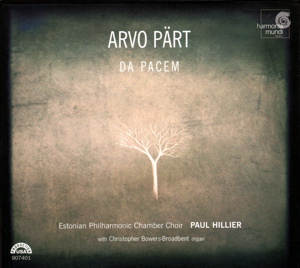 |
|
Arvo Part: Da
Pacem
Estonian
Philharmonic Chamber Choir
Harmonia Mundi
USA HMU 907401 (also available in SACD format)
|
|
0 |
5 |
|
Performance |
 |
|
Sonics |
 |
|
Most deserving of its
2007 Grammy nomination, this ethereal recording of sacred choral music by
Estonian composer Arvo Part (b. 1935) expands far beyond its digital
confines. Thanks to the fabled Estonian Philharmonic Chamber Choir,
conducted by longtime P�rt collaborator Paul Hillier, Part's music resounds
with timeless reverence. The voices, sometimes accompanied by Christopher
Bowers-Broadbent's organ, ring on forte passages, elsewhere floating hushed,
transporting tones. Toward the end of the 13-minute Salve Regina,
written five years ago, the organ's exquisitely spare triads chime with Part's
characteristic "tintinnabuli" (from the Latin, "little bells"), a technique
used in most of his mature works. Dopo la vittoria is at times quite
animated; in one section, the men voice the melody while the women comment
in counterpoint, imitating the back and forth of Saint Ambrose and Saint
Augustine singing a hymn to the Holy Trinity. You may not be into religion –
I'm certainly not – but the faith that resounds through Part's music will
for many speak a pantheistic language. |
|

|
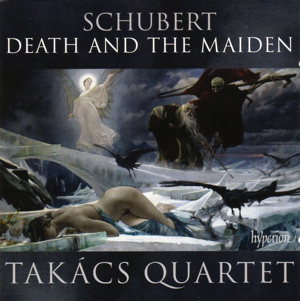 |
|
Franz Schubert:
String Quartets 'Death and the Maiden' * 'Rosamunde'
Takacs String
Quartet
Hyperion
CDA67585
|
|
0 |
5 |
|
Performance |
 |
|
Sonics |
 |
|
The sharp opening chord
of Schubert's string quartet 'Death and the Maiden' strikes right through
the heart. Written in 1824, the year after the 27-year old composer
exhibited the first symptoms of syphilis, it is a work of utmost resignation
and despair. With his youth seemingly behind him, and protracted suffering
lying ahead, Schubert poured his heart out in both this, his 14th
string quartet, and his 13th 'Rosamunde' quartet written the same year.
Why listen to a work
filled with such pain? On one level, Schubert's grief is so personal, so
exposed, and so free from denial that his suffering speaks to all. Yet, by
venting his grief while simultaneously acknowledging the infinite beauty in
life with every note, he miraculously transcends suffering to embrace a
higher or at least equal truth about the human condition. Life may be filled
with suffering, but it is also filled with beauty worth rejoicing. So this
music seems to say.
Some have called the
Takacs String Quartet the greatest string quartet in the world. Regardless
of the truth of that statement – there are so many criteria involved in the
judging that the assertion ultimately seems beyond the point – they
certainly seemed unequalled when I heard them perform the 'Death and the
Maiden' Quartet No.14 in D minor live some years back. Now, with veteran San
Francisco Symphony principal violist Geraldine Walther replacing their
former violist, their new recording that pairs Schubert's 'Death and the
Maiden' and 'Rosamunde' string quartets retains if not magnifies the same
impact. The essential interplay and cooperation between viola and cello that
make the slow movement of 'Death and the Maiden' sing with such devastating
eloquence are reinforced by the heart-breaking sweetness and forceful cries
of first violinist Edward Dusinberre. These are great musicians, with
veteran second violinist Kroly Schranz and cellist Andres Fejer equally
eloquent. (Fejer's cello is especially clear in the second movement). The
performance is riveting, as shattering as it ultimately uplifting.
If the 'Rosamunde'
quartet represents a gentler excursion into melancholy, it is no less filled
with beauty. Here again, the extraordinary oneness between the members of
the quartet enriches musicianship as thought through as it is alive to every
moment. What keeps the playing fresh is the tension, the constant interplay
of pitch, rhythm, and nuance that declares Schubert's emotions as real and
relevant today as they were close to two centuries ago. |
|

|
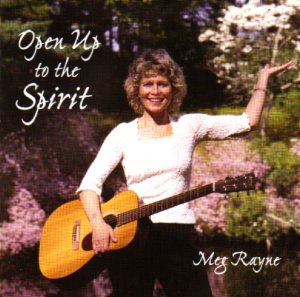 |
|
Meg Rayne
Open Up to the
Spirit
Unity on the
River Records
|
|
0 |
5 |
|
Performance |
 |
|
Sonics |
 |
|
I have lots of sympathy
for independent musicians, being one myself. But few of their CDs make the
grade. Meg Rayne's is different. When she sings "Open Up to the Spirit" to a
classic upbeat country/gospel melody, her energy is so positive that you
immediately sense that she's not just another folk singer going through the
motions. Siinging her own songs, Meg's "Still Small Voice" and "Prayer
Changes Everything" are the real thing. Her somewhat throaty voice, pushed
on top, may not rival the clarity and freedom of some of the greats in their
prime, but it's quite lovely, and ideal for her subject matter. If you're
looking for songs of faith with a distinct New Age tint - songs that you'd
be happy to play at a Unity service or sing with friends - give Meg a
listen.
|
- Jason Victor Serinus
-
|
© Copyright 2007 Secrets of Home Theater and High Fidelity
|